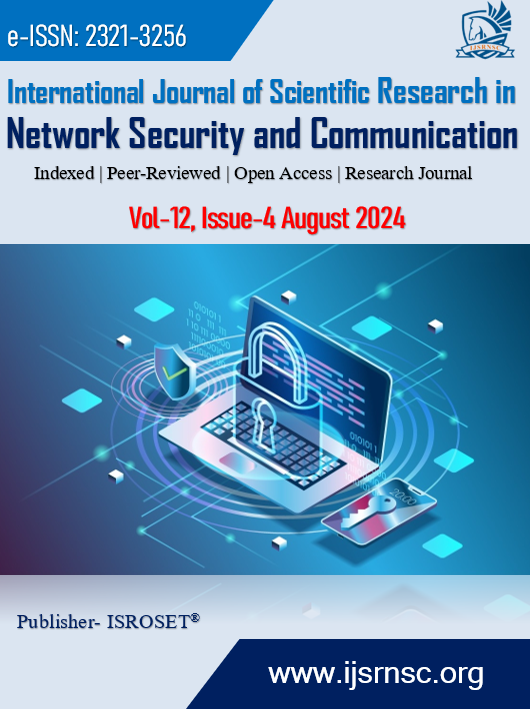Interactive Learning with a Digital Library Education in Science, Technology, and Engineering
Keywords:
Engineering Education Technology-Enhanced Teaching and Learning, Digital Library, Science Education, Technology EducationAbstract
Numerous extensive initiatives to create digital libraries have been spurred by the requirement for information systems to facilitate the distribution and reprocess of educational materials. Ideas like online learning are currently being applied to teaching and learning in education more often. But when it comes to adopting new technology techniques, STEM education is still lagging behind because of the nature of the subject matter. This discrepancy can be attributed to the fact that these areas frequently need laboratory exercises in order to effectively teach skills and offer practical experience. Making these laboratories available online is sometimes challenging. It is necessary to either reproduce the real lab as a totally software-based virtual lab or permit remote access to the real lab. New and developing technologies are presently being developed that can get around some of the possible challenges in this field. These comprise virtual worlds, computational dynamics, augmented reality, and computer graphics. The state of the art in virtual labs and virtual environments for science, technology, and engineering is compiled in this article. Therefore, many of the same learning processes may be observed in the usage of virtual labs for other scientific and non-robotic engineering purposes. This can involve encouraging the introduction of new ideas as part of studying science and technology, as well as the introduction of more general engineering knowledge. It can also involve encouraging more positive and cooperative training and education activities in the context of a more complex engineering subject, like robotics.
References
Z. al. Pan et, “Virtual reality and mixed reality for virtual learning environments, Computers & Graphics”, Elsevier, 2006.
R Tripathi, “Inventiveness of Text Extraction with Inspiration of Cloud Computing and ML using Python Logic”,Intelligent Systems Design and Applications, pp. 295, 2022
Huang H.-M, “Investigating learner`s attitudes toward virtual reality environments: based on a constructivist approach”, Computers & Education, Elsevier, 2010.
Potkonjak V, “Virtual mechatronic/robotic laboratory – a step further in distance learning”, Computers & Education, Elsevier, 2010.
Aziz E.-S.S., “A multi-user virtual laboratory environment for gear train design”, Computers Applications in Engineering Education (John Wiley & Sons), 2014.
Bondaryk, L. “Publishing New Media in Higher Education: Overcoming the Adoption Hurdle”, Journal of Interactive Media in Education, 1998.
Jacobson, Frances F., and Emily N. Ignacio. "Teaching reflection: Information seeking and evaluation in a digital library environment.", Library Trends, pp.771-802, 1997.
Manduca, C. and Mogk, D. “Digital Library for Earth System Education: A Community Plan”, University of Oklahoma, pp.44, 2000.
Marshall A.D. and Hurley S. “The Design, Development and Evaluation of Hypermedia Courseware for the World Wide Web”. Multimedia Tools and Applications, Issue.3, pp.5-31, 1996.
Muniram Budhu and Anita Coleman. "The Design and Evaluation of Interactivities in a Digital Library" D-Lib Magazine, 2002
Marchionini G. and Maurer H.. “The Roles of Digital Libraries in Teaching and Learning”, Communication of the ACM, Vol.38, Issue. 1, pp. 67-75, 1995.
Merdich E. A., Roizen J., Rubin V. and Buckley S., “The Serious Business of Growing Up”, University of California Press, Berkeley, 1997.
Paepcke, A., C. K. Chang, H. Garcia–Molina and T. Winograd, “Interoperability for Digital Libraries Worldwide,” Communications of the ACM, pp. 33–42, 1998.
Tripathi, R., Mishra, V. K., Kumar, “Influence of Deepfake Terminology on Content-Emerging Threat Reduction”, 3rd International Conference on Innovative Sustainable Computational Technologies (CISCT) ,IEEE, pp. 1-5, 2023.
Ciampa K., “Learning in a mobile age: An investigation of student motivation”, J. Comput. Assist. Learn, pp. 82–96, 2014.
S. Freeman, S. L. Eddy, M. McDonough, M. K. Smith, N. Okoroafor, H. Jordt, and M. P. Wenderoth, Active Learning Increases Student Performance in Science, Engineering, and Mathematics, Proc. Natl. Acad. Sci. U.S.A. pp.8410–8415, 2014.
Downloads
Published
How to Cite
Issue
Section
License

This work is licensed under a Creative Commons Attribution 4.0 International License.
Authors contributing to this journal agree to publish their articles under the Creative Commons Attribution 4.0 International License, allowing third parties to share their work (copy, distribute, transmit) and to adapt it, under the condition that the authors are given credit and that in the event of reuse or distribution, the terms of this license are made clear.






